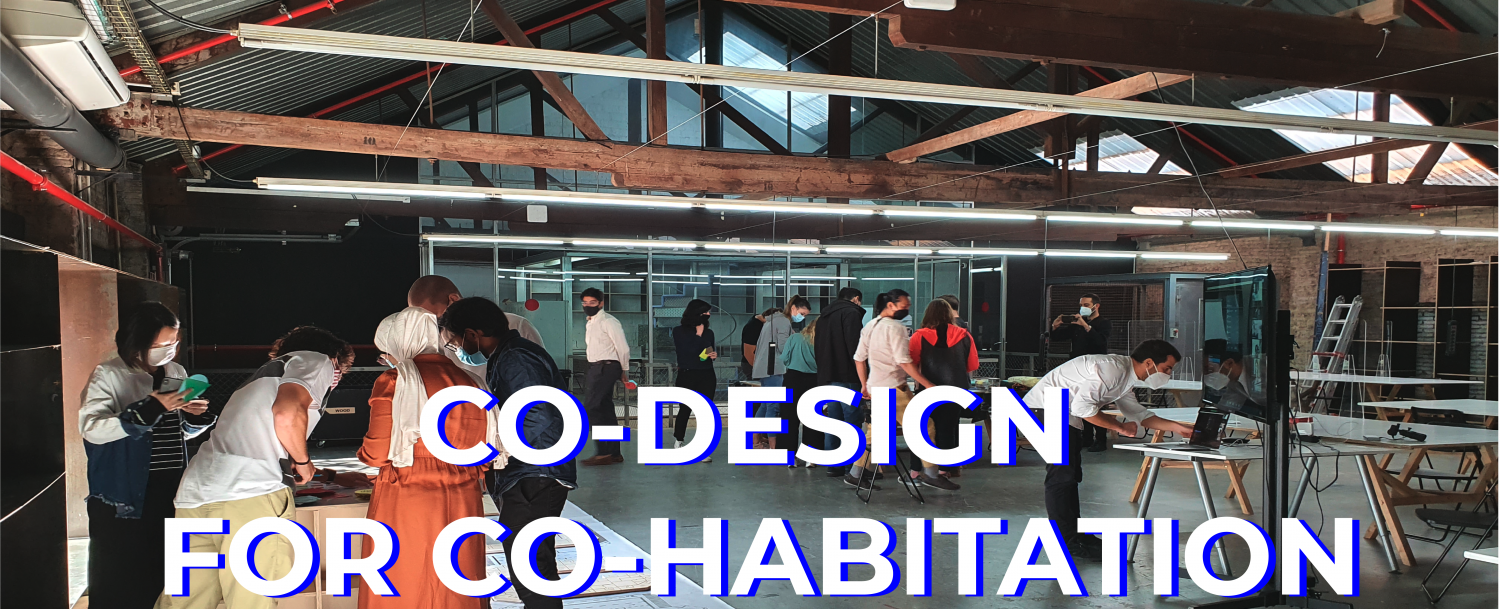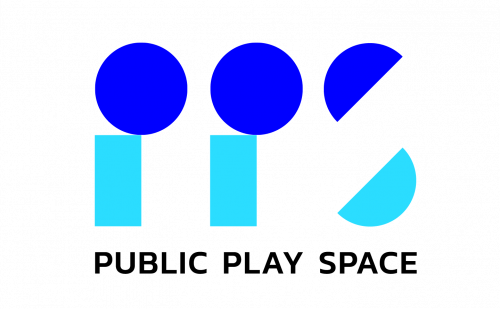| Line 11: | Line 11: | ||
| colspan="2" |https://www.publicplayspace.eu/ | | colspan="2" |https://www.publicplayspace.eu/ | ||
|} | |} | ||
[[File:WSHOP BCN.png|center| | [[File:WSHOP BCN.png|center|1500x1500px|alt=]] | ||
Revision as of 16:57, 10 July 2021
Creative & Capacity building workshop |
|
Barcelona, 28-30 September 2020 | |
| https://www.publicplayspace.eu/ | |
PPS conducted the third and last Creative and Capacity Building Workshop in Barcelona during 28-30 September 2020. Titled “Co-Design for Co-Habitation” and organized by IAAC, it gathered 20 participants that joined both in person and remotely.
During these three days, they worked together in 6 groups with the objective of developing strategies and projects that activate the public space by using advanced interactive technologies combined with playful interaction and gamification techniques. The intense work sessions were combined with expert feedback meetings and insightful and inspirational lectures given by the PPS project partners on Interactive Technologies for Co-Habitation, Theory of Games, Digital versus Analogue Games, and Emotional Landscape.
The results were 6 amazing project proposals: The Urban Pyramid, Lucus Lux, The Loop, Pujades Soundscape, The Urban Sweeper, and Designing by Moving. After a tight deliberation, the jury announced the selected three best projects: first place went for Urban Sweeper, the second for Lucus Lux, and the third for Pujades Soundscape!
Presentations and Lectures:
Presentation of IAAC, by Marco Ingrassia
Presentation of CLAC, by Davide Leone
Presentation of BUAS, by Zhan Goosen
Lecture by Nick van Apeldoorn (BUAS): Digital versus Analogue
Lecture by Davide Leone (CLAC): Theory of Game and Game Mechanics
Lecture by Carmelo Zappulla (IAAC): Emotional Landscape
PROJECTS
URBAN SWEEPER GAME
Inspired by the 1960’s computer game of minesweeper, the Urban Sweeper is an interactive game designed as a tool for planners and citizens to engage in the co-design of their public spaces. By bringing the logic of minesweeper to the urban scale, the game gives the tools to citizens to learn about the objects that make up their urban environment and the relationships these objects have with one another. On the other hand, it allows planners to collect data on citizen’s wants, desires and patterns. Urban sweeper is a flexible and fun platform that opens an engaging learning experience using advanced interactive technologies and game strategies, counting on the nostalgic effect of such a well known game.
Just like minesweeper, the aim of the game is to clear a rectangular board containing hidden ‘mines’ (in this case – a defined set of ‘objects’). Firstly, the street is pixelated into (60cmx 60 cm) cells. Upon landing on the first cell, the game is activated and a set of a randomly generated pattern appears. The cells have three states- covered, uncovered, and blocked. A covered cell contains the name of the element and can be uncovered by standing on it. An uncovered cell contains the exposed element in real scale via a projection on the floor. A blocked cell cannot be selected. As the player selects elements, clues appear along the path and more and more choices are revealed. The player then has to make decisions on the next move and deduce the best desired scenario for the street layout. The game also allows multiple players to collaborate to complete the set. The Urban Sweeper works through a series of projectors that are placed on one or two points on the facade of the neighboring buildings. Sensors detect the movement of the player on the grid while another projector displays messages on the facade that allows for with game instructions. Since the game consists of a pixelated grid system, it has the potential to grow and expand to occupy different typologies of spaces.
The Urban sweeper allows the player to see the impact of his/ her decisions in real time and in a playful and engaging manner. The players begin to understand the scale of the objects they place in relation to the grid and in relation with each other and are triggered to ask themselves critical questions such as: “Can I place a bike sharing station next to the playground ? Or do I create a walkway?”. It also allows the planners to ask questions on the habits of the players: “How many people passed by without stopping? How many chose a fountain over a ping pong table? What are the most selected objects?”. And so on.
A mix between play and reflection, the Urban Sweeper encourages citizens to be critical with their choices in the public space and to express their desires. The game is adaptable and can be programmed to suit different scenarios from small neighborhood streets all the way to large plazas. So hop on and start the game!
LOCUS LUX GAME
The walk-in installation ‘Lūcus Lux – sacred grove of light’ attracts by creating a multisensory experience for its visitors. The illuminated forest invites people to be creative and form their own blooming playspace onto its blank canvas. By placing this installation into the urban fabric, we want to bring awareness to the need for the re-naturalization of our urban environments through a playful interaction.
The experience is meant to be multisensory by combining today’s technology with nature, education, play and reward. The installation combines light, animated projection, sound, and haptical elements.
Through the playful drawing of different projected natural elements into this virtual environment, the project fosters awareness in the visitors about the local flora and fauna species, and generates knowledge on the importance of creating a balanced environment. In fact, the game mechanics are based on the challenge to achieve balance in the space. Once this challenge is reached, you will be rewarded by the dispense of real seeds falling down onto the play-canvas. These seeds are meant to be spread by the participants throughout the city and allow people to have an active role in the re-naturalization.
The seeds shall include flowers like aster and calendula to attract butterflies back to our balconies, lavender and abelia to help our bees, sunflowers to grow within our streets and feed various kinds of birds and many more.
PUJADES SOUNDSCAPE GAME
Pujades Soundscape addresses acoustic-urban relationships through games of listening and acoustic control on the street-front of the IAAC Atelier campus. An Internet of Things kit of sensors and modules are integrated into digitally fabricated acoustic-domes, deployed as urban nodes for auditory games involving neighbourhood and city-wide stakeholders in both passive and active manipulation of street sounds.
A catalogue of naturalistic sounds emit from the acoustic-domes, are aimed to invite unexpected acoustic delight for individuals or groups of pedestrians/players. Touchless controls of the dome’s sonic environment provide a pandemic-friendly solution for collective gaming. The LED light system of the domes synchronize with the individual and collective sounds of the acoustic-domes, creating a spectrum of colours that resonate with the street’s soundscape through day and night.
- GO TO "GENERATION EARTH" PAGE >>>>>>>










